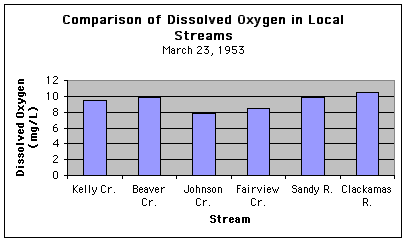
If you want a high score, all of the graphs you turn in should be drawn on graph paper or printed from a computer graphing program!

If you want the highest IB score:
1. All graphs for all assignments in IB Biology at GHS should be done either on graph paper or on a computer graphing program.
2. You should make your own graph. Copies of other peoples' graphs don't count!
3. All graphs should include a descriptive title (Hint: What does the graph show us?). The title of a graph often is directly related to the experiment title, question, or hypothesis !
4. Both the X- and Y- axes should be labeled, each with units where appropriate!
5. If multiple sets of data are present, select data points or colors which show the different data clearly. Provide a key too!
6. If you calculated standard deviation for the trials of each of your IV, include this on your graph!
7. Write a sentence or short paragraph below the graph that states what the data shows!
Line graphs work well when both the dependent and independent variables represent numerical data. This also works well to show show a change of your DV over a series of different IV.

Graph Description: This graph shows how the water temperature of Fairview Creek changed from September 2001 to April 2002. The water temperature dropped from a high of 20¾C in September to a low of 6¾C on January 28, 2002. It slowly raised to a temperature of 13¾C in April 2002.
Bar graphs work well when one of the variables does not involve numbers. It also works well when you are comparing a simple change in DV (or percent change in DV) amongst your various IV.
Examples: Car type vs. gas mileage.
Oxygen level vs. stream.
Population vs. country

Graph Description: On March 23, 1953, the Clackamas River had the highest Dissolved Oxygen (DO) at 11 mg/L. Beaver Creek and the Sandy River both were second with a DO of 10 mg/L. Kelly Cr had a DO of 9.5 mg/L, Fairview Cr had a DO of 8.5 mg/L, and Johnson Cr had a DO of 8 mg/L.